What happened when al-Shabab attacked a Kenyan base in Somalia?
- Published
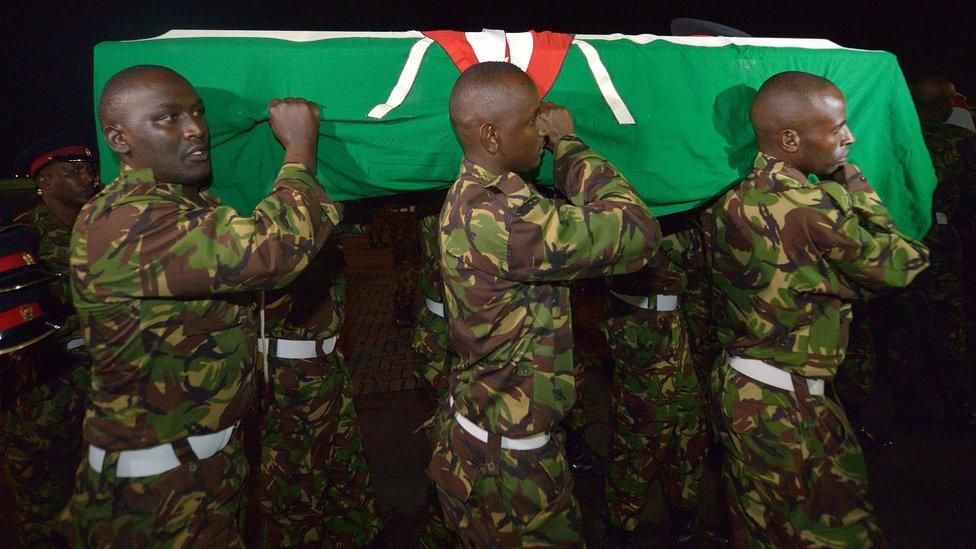
No official figures have yet been released about how many Kenyan soldiers died
Mystery still surrounds the deadly attack by Islamist militants on an African Union (AU) base in Somalia last Friday.
Residents of the south-western el-Ade town were the first to break the news, saying al-Shabab fighters arrived at dawn.
The raid began with an explosion by a suicide car bomber at the gates of the base after which dozens of gunmen followed, shooting as they went.
Eyewitnesses said dozens of Kenyan soldiers were killed while others ran away into the bush.
But this was not the version of events that was given by the Kenyan military.
The base on the outskirts of town is made up of two military camps - one housing the Somalia national army and the other for a contingent of Kenyan troops.
A few hours after the attack began, Col David Obonyo, the Kenya's defence force spokesman, insisted it was the Somali camp that had been hit - and that Kenyan troops had rushed to its defence.
However, a Somali government official disputed this and told the BBC that it was actually the Kenyan-manned section that was raided.

More on al-Shabab:

In the days since the attack, there have been no reports of Somali military casualties and no indication that Somali soldiers were even present at the time of the attack.
Kenya's Chief of Defence Forces General Samson Mwathethe now says the attackers used three powerful car bombs at the entrances to the two adjacent camps.
A Somali general has told the BBC the Kenyan military had been warned of an impending al-Shabab attack. General Abas Ibrahim Gurey told the BBC "clear and reliable intelligence" had been passed on 45 days before the jihadist fighters struck.
Al-Shabab has always insisted that the Kenyans were their target, and claimed to have taken "complete control" of the camp and seized weapons and vehicles.
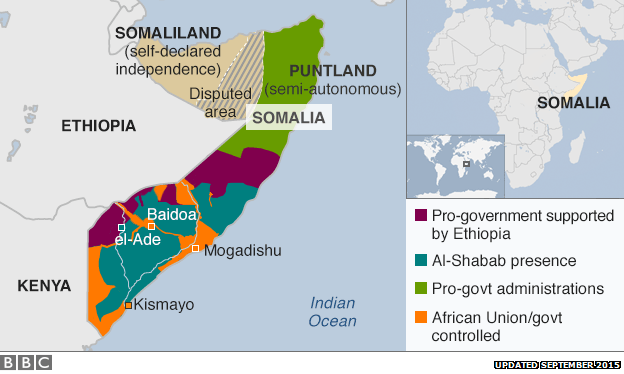
El-Ade residents said the fighters had hoisted their flags in the Kenyan section and were parading the bodies of the dead Kenyans, sending out media statements that 60 soldiers had been killed.
Human shields
However, an official figure for those killed is still not known. The military is still investigating the incident and says it will even require DNA testing to identify the bodies of the Kenyan soldiers.

Kenya contributes about 4,000 troops to the 22,000-strong AU force in Somalia
On Sunday, four injured Kenyan soldiers were airlifted to Nairobi for medical treatment, followed by another 16, who Col Obonyo said were mostly suffering from trauma.
Defence Minister Raychelle Omamo gave the first lead regarding numbers on Monday, saying the group affected by the attack was a "company-sized force", which could be anything between 80 and 250 men.
By then al-Shabab was saying it had killed 100 Kenyans.
The militant group, linked to al-Qaeda, said its figures had gone up as its fighters had pursued some of the soldiers who fled.
On Tuesday, a Somali official told the BBC that 13 Kenyan soldiers who had escaped during the raid had shown up in another town in the south-western Gedo region.
The men were said to have arrived on foot and appeared traumatised.
The official said they were in safe hands and would be handed over to the Kenyan contingent of the AU's military mission.
In response to Friday's attack, Kenyan military planes are said to be bombing in Gedo, although it is not clear who or what they are targeting.
Kenya's military chief General Samson Mwathethe said it was a delicate operation as al-Shabab was using the captured Kenyan soldiers as human shields.
Photo war
The militants have added insult to injury by leading the way in the propaganda battle.
On Wednesday, the group released what it says are photos of the scene of the attack.
The images, which the BBC cannot independently verify, show damaged vehicles, abandoned caches of arms and gory pictures of dead soldiers in Kenya's army uniform.
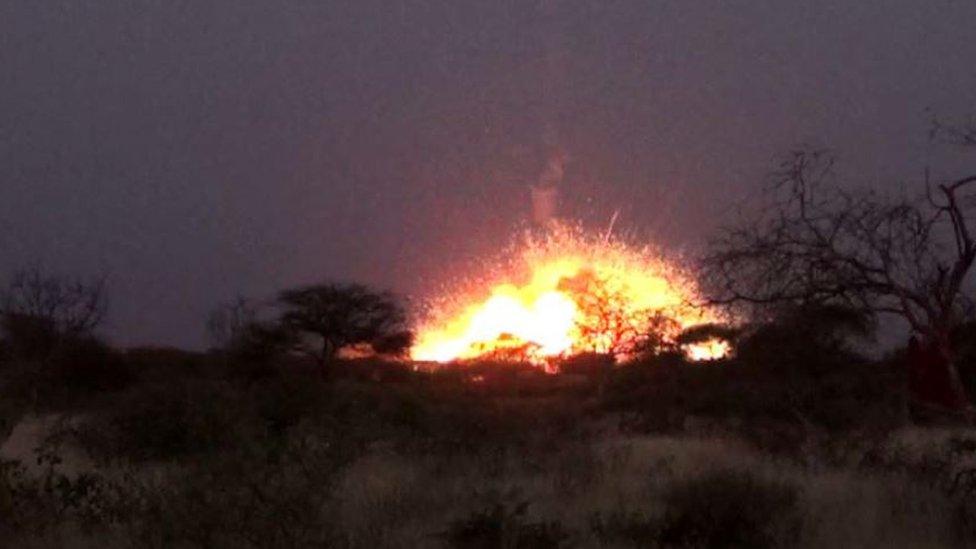
The BBC cannot independently verify the photos released by al-Shabab of the el-Ede attack
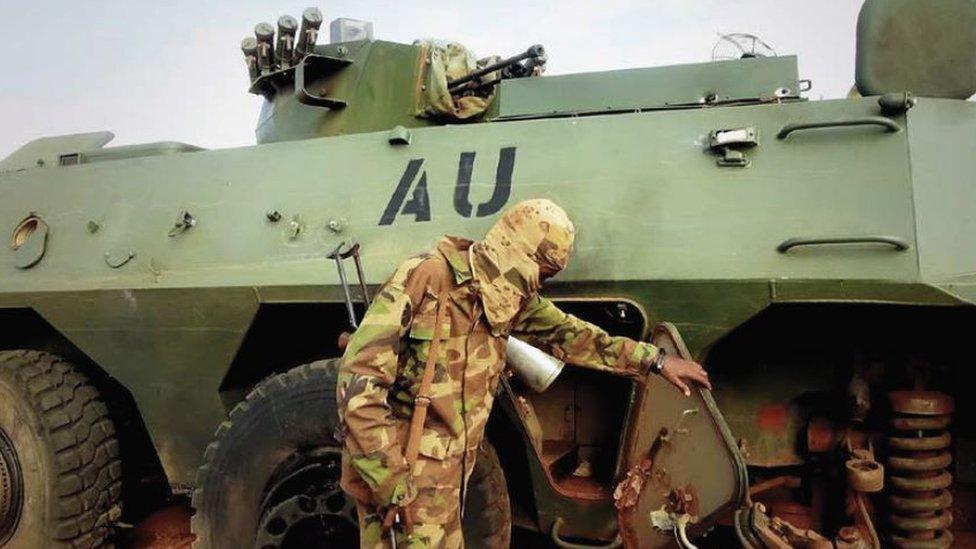
Al-Shabab sent out more than 100 photos it says were taken in the aftermath of the attack

Al-Shabab says this is a photo of militants looking through boxes of supplies at the el-Ade camp
The government had already said it would take legal action against anyone who shared photos of its dead soldiers.
Interior Minister Joseph Nkaissery said this was necessary to avoid "amplifying the terrorist agenda through sharing of photos and sympathising with the terrorists".
And it held to its threat, charging a man on Tuesday accused of distributing such photos on the messaging service WhatsApp.
The Kenyan military says it will only release official figures when the ongoing search-and-rescue operation is complete and family members of the dead have been informed.
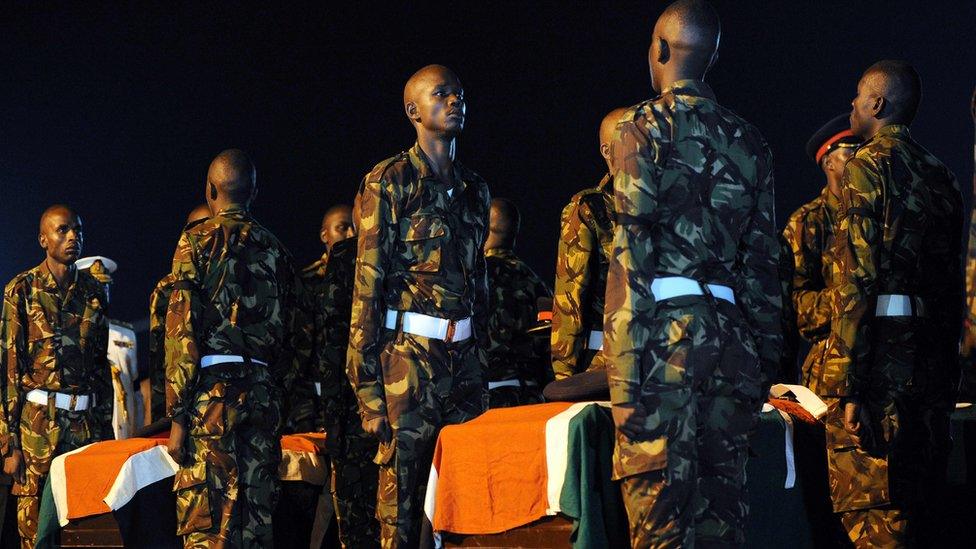
Kenya says a search and rescue operation is still ongoing in Somalia's Gedo region
However, some of these relatives, who have flocked to military bases around Kenya to find out the fate of their loved ones, have complained that the military is keeping them in the dark.
Kenya contributes about 4,000 troops to the 22,000-strong AU force in Somalia.
President Kenyatta says the attack - the heaviest the Kenyans have suffered since their arrival in Somalia in 2011 - will not affect its mission and will only strengthen their resolve to achieve regional peace.
But the images that are likely to stick with Kenyans are those of four flag-draped coffins of dead soldiers who arrived in Nairobi on Monday night in the full view of the media.
- Published15 January 2016
